


Dashi Soy Sauce is a multipurpose condiment perfect to use as is, dilute, marinate or as a finishing touch. From Japanese to Western, you can add Dashi Soy Sauce to any style cuisine.


Adding a few drops draws out the umami to create a fully harmonious dish. It goes well with Japanese chilled tofu, sushi and many other dishes.


Dashi Soy Sauce can be used not only for pouring as is, but also for seasoning stir-fried, simmered and grilled dishes. The flavor of dashi soaks into the ingredients and brings out the umami taste. This allows for the creation of delicious meals that are healthy with less salt. Give it a try.


Dr. Kikunae Ikeda of Tokyo Imperial University (now The University of Tokyo) wondered: "Why is the tofu boiled with kombu better tasting than plain tofu boiled with water?" He began his research into this mystery that did not fit into any of the four basic tastes: sweet, sour, salty and bitter. In 1908, he discovered that glutamic acid from kombu was the cause of this 'new' taste. He named it "umami."


In 1955, 47 years after the discovery of umami, Dr. Akira Kuninaka discovered the "Synergistic effect of umami" in which umami becomes amplified when amino and nucleic acids are mixed together. The resulting umami is 15 times when compared to being used separately. We have not only increased the content of umami ingredients through fermentation and aging, but also experienced the synergistic effect of umami to maximize the flavor in any style cuisine.
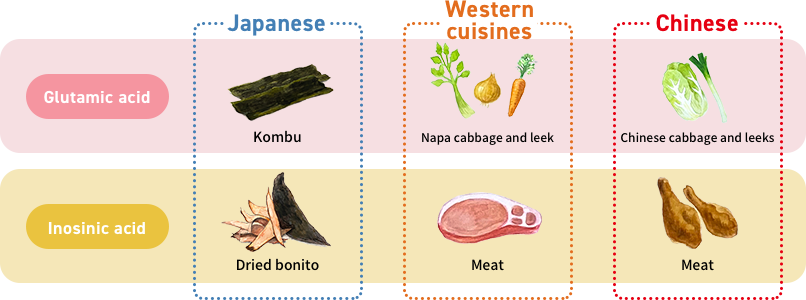

The ingredients of soy sauce are soybeans, wheat, salt and koji mold (Aspergillus). Those ingredients - soybean protein and wheat starch - are decomposed, fermented and finally matured into a variety of flavor/color/aroma components.
Soy sauce is a condiment that contains all five basic taste elements: sweet, sour, salty, bitter and umami.


"Dashi Soy Sauce" was created and launched in 1965 when Kamada realized the in-house idea of making everyday cooking effortless and successful.Making sure flavor was the first priority, we carefully selected dried mackerel from Yakushima, dried bonito from Makurazaki and kombu from Hokkaido. After two years of development, we perfected what is known today as "Dashi Soy Sauce", versatile and full of umami.

Mackerel shavings
Mackerel shavings

The multilayer structure reduces air exposure which preserves the fresh color, taste and aroma even after opening compared to or plastic bottles.
Advantages of
paper cartons
Being combustible paper means less carbon dioxide emissions and helps to protect environment compared to other types of containers.
We conserve the transportation footprint because our cartons are compact and lightweight.
Advantages of
multilayer structure



Basic cap 200ml
It is designed to prevent spillage and pouring volume can be easily adjusted.


Two-level cap 500ml
An extrusion type carton allows you to squeeze to pour and return to stop. More can be poured when removing the two-level cap.




My son gave me Dashi Soy Sauce for a Mother's Day gift. The card read: "This is the Dashi Soy Sauce I'm into these days. If I could bring one thing to a deserted island, this will be it!" I thought it was too silly, but when I made udon soup, I understood why my son felt that way. I am overjoyed with my first Dashi Soy Sauce experience. One woman's introduction to Dashi Soy Sauce 2019

I always see the Kamada Soy Sauce billboard on the Marine Liner to Takamatsu, as it arrives into Sakaide station. Today, I made up my mind to try it for the first time. I liked the taste that is familiar with the small manufacturers, that is not in the big manufacturers. One man's introduction to Dashi Soy Sauce 2020

Now, at this old age of mine, I got this soy sauce from a friend. I was really impressed by how good it was. Since the war, I have not been able to eat eggs. My grandchild urged me to have it with tamagokake gohan (egg on rice). It was like having eggs for the first time and it was so delicious! Thank you so much for this delectable soy sauce! I will share it with everyone I know. One woman's introduction to Dashi Soy Sauce 2019

Hello, I'm an 84-year-old grandmother. My 93-year-old friend shared some of your soy sauce with me. We were both amazed that there was such convenient and tasty soy sauce out there! I will pass this on to another friend of mine like a relay race. One woman's introduction to Dashi Soy Sauce 2019




Birth of our first
paper carton

When glass and plastic bottles were still very common, we chose to use sturdy paper cartons that were easier for wide distribution throughout Japan. In fact, Kamada was the first soy sauce company to introduce 300ml paper cartons to the soy sauce industry.

Birth of our second
paper carton
with spout cap

We developed the very first 200ml paper carton with spout cap in the food industry which is easy to pour and reduces spillage.

Birth of our third
paper carton
with one-touch spout cap

We improved our original spout cap to a one-touch spout cap that has even less spillage.
The kitchen size 500ml paper carton also debuted.

In the late 1980s, most people were still making dashi broth at home. The new combination of soy sauce and dashi was still not popular in Kagawa prefecture.
In 1987, we decided to switch from the then popular glass bottles to sturdy and shipping-friendly paper cartons. This made it easier to deliver our new concept of dashi soy sauce to more and more households. However, at that time, the then president needed a way to reach out to more people and wanted to share his idea with all of Japan. He began delivering samples to his friends and acqauintances. They loved the Dashi Soy Sauce packed in the paper carton and began spreading the word about it throughout Japan.
He also took the time to hand write thank you letters in every package to show his appreciation.
We have and will continue to deliver safe, high-quality products. We will also strive for a close connection to all of our customers' hearts and minds.




scroll horizontally

Dashi Soy Sauce is a multipurpose condiment perfect to use as is, dilute, marinate or as a finishing touch. From Japanese to Western, you can add Dashi Soy Sauce to any style cuisine.
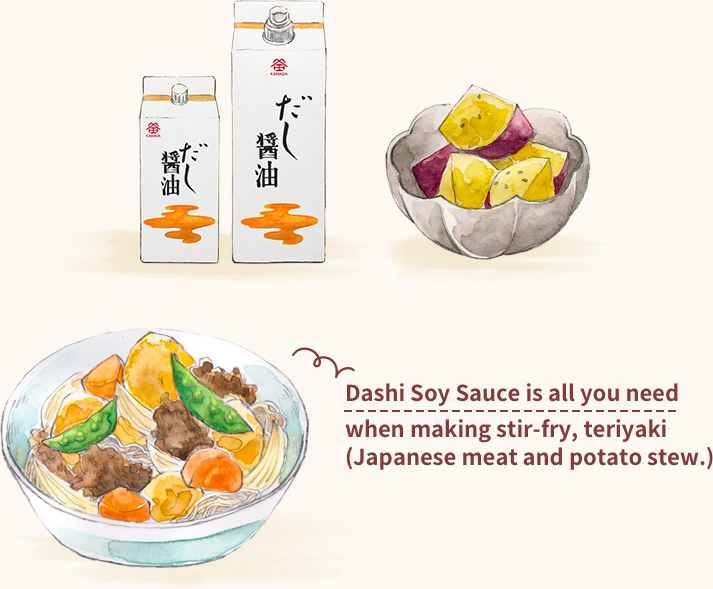

Adding a few drops draws out the umami to create a fully harmonious dish. It goes well with Japanese chilled tofu, sushi and many other dishes.
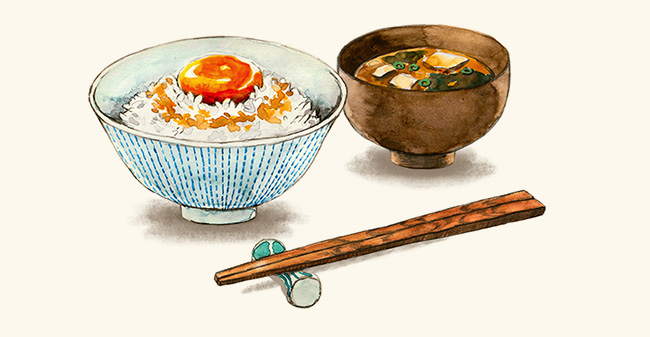

Dashi Soy Sauce can be used not only for pouring as is, but also for seasoning stir-fried, simmered and grilled dishes. The flavor of dashi soaks into the ingredients and brings out the umami taste. This allows for the creation of delicious meals that are healthy with less salt. Give it a try.


Dr. Kikunae Ikeda of Tokyo Imperial University (now The University of Tokyo) wondered: "Why is the tofu boiled with kombu better tasting than plain tofu boiled with water?" He began his research into this mystery that did not fit into any of the four basic tastes: sweet, sour, salty and bitter. In 1908, he discovered that glutamic acid from kombu was the cause of this 'new' taste. He named it "umami."
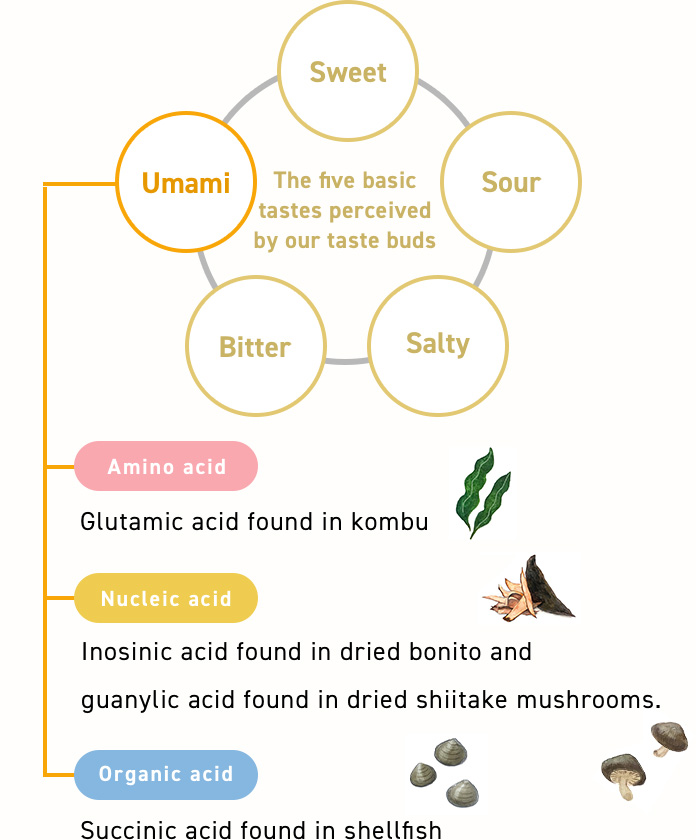

In 1955, 47 years after the discovery of umami, Dr. Akira Kuninaka discovered the "Synergistic effect of umami" in which umami becomes amplified when amino and nucleic acids are mixed together. The resulting umami is 15 times when compared to being used separately. We have not only increased the content of umami ingredients through fermentation and aging, but also experienced the synergistic effect of umami to maximize the flavor in any style cuisine.
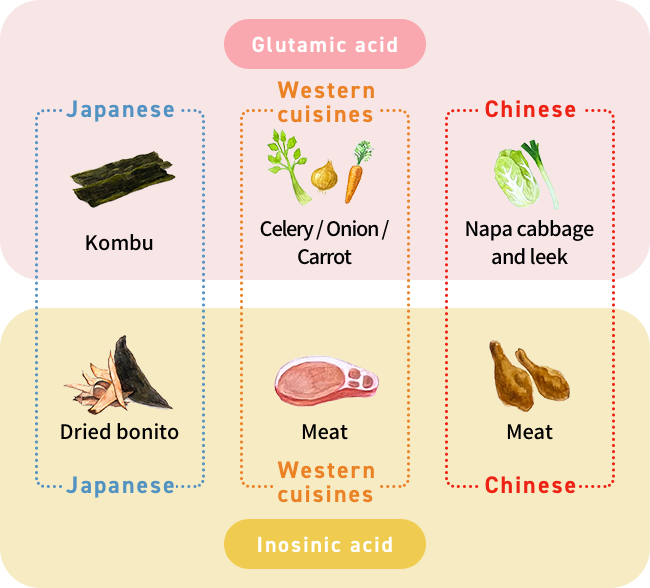

The ingredients of soy sauce are soybeans, wheat, salt and koji mold (Aspergillus). Those ingredients - soybean protein and wheat starch - are decomposed, fermented and finally matured into a variety of flavor/color/aroma components.
Soy sauce is a condiment that contains all five basic taste elements: sweet, sour, salty, bitter and umami.


scroll horizontally

"Dashi Soy Sauce" was created and launched in 1965 when Kamada realized the in-house idea of making everyday cooking effortless and successful.Making sure flavor was the first priority, we carefully selected dried mackerel from Yakushima, dried bonito from Makurazaki and kombu from Hokkaido. After two years of development, we perfected what is known today as "Dashi Soy Sauce", versatile and full of umami.
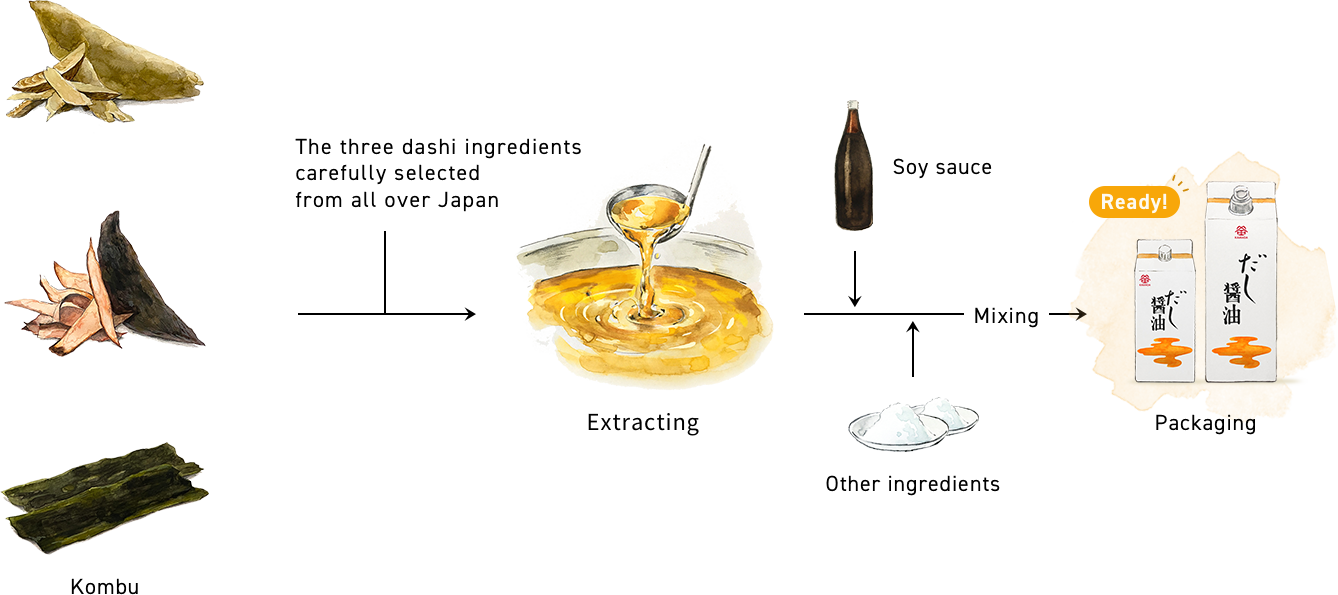


scroll horizontally

The multilayer structure reduces air exposure which preserves the fresh color, taste and aroma even after opening compared to or plastic bottles.
Advantages of
paper cartons
Being combustible paper means less carbon dioxide emissions and helps to protect environment compared to other types of containers.
We conserve the transportation footprint because our cartons are compact and lightweight.
Advantages of
multilayer structure
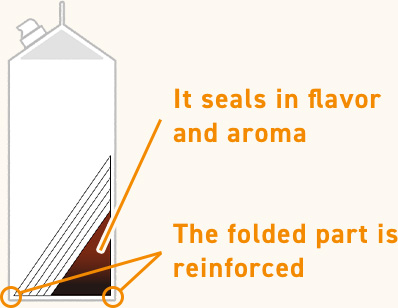


Basic cap 200ml
It is designed to prevent spillage and pouring volume can be easily adjusted.


Two-level cap 500ml
An extrusion type carton allows you to squeeze to pour and return to stop. More can be poured when removing the two-level cap.




My son gave me Dashi Soy Sauce for a Mother's Day gift. The card read: "This is the Dashi Soy Sauce I'm into these days. If I could bring one thing to a deserted island, this will be it!" I thought it was too silly, but when I made udon soup, I understood why my son felt that way. I am overjoyed with my first Dashi Soy Sauce experience. One woman's introduction to Dashi Soy Sauce 2019

I always see the Kamada Soy Sauce billboard on the Marine Liner to Takamatsu, as it arrives into Sakaide station. Today, I made up my mind to try it for the first time. I liked the taste that is familiar with the small manufacturers, that is not in the big manufacturers. One man's introduction to Dashi Soy Sauce 2020

Now, at this old age of mine, I got this soy sauce from a friend. I was really impressed by how good it was. Since the war, I have not been able to eat eggs. My grandchild urged me to have it with tamagokake gohan (egg on rice). It was like having eggs for the first time and it was so delicious! Thank you so much for this delectable soy sauce! I will share it with everyone I know. One woman's introduction to Dashi Soy Sauce 2019

Hello, I'm an 84-year-old grandmother. My 93-year-old friend shared some of your soy sauce with me. We were both amazed that there was such convenient and tasty soy sauce out there! I will pass this on to another friend of mine like a relay race. One woman's introduction to Dashi Soy Sauce 2019




Birth of our first
paper carton

When glass and plastic bottles were still very common, we chose to use sturdy paper cartons that were easier for wide distribution throughout Japan. In fact, Kamada was the first soy sauce company to introduce 300ml paper cartons to the soy sauce industry.

Birth of our second
paper carton with spout cap
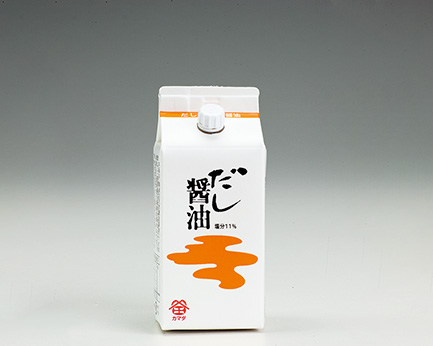
We developed the very first 200ml paper carton with spout cap in the food industry which is easy to pour and reduces spillage.

Birth of our third
paper carton
with one-touch spout cap
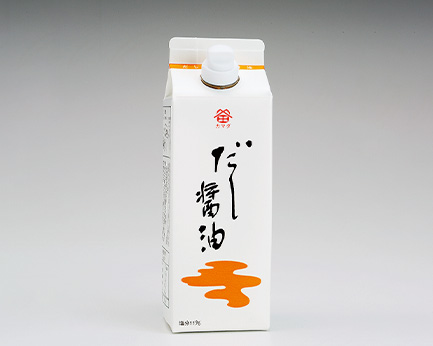
We improved our original spout cap to a one-touch spout cap that has even less spillage.
The kitchen size 500ml paper carton also debuted.

In the late 1980s, most people were still making dashi broth at home. The new combination of soy sauce and dashi was still not popular in Kagawa prefecture.
In 1987, we decided to switch from the then popular glass bottles to sturdy and shipping-friendly paper cartons. This made it easier to deliver our new concept of dashi soy sauce to more and more households. However, at that time, the then president needed a way to reach out to more people and wanted to share his idea with all of Japan. He began delivering samples to his friends and acqauintances. They loved the Dashi Soy Sauce packed in the paper carton and began spreading the word about it throughout Japan.
He also took the time to hand write thank you letters in every package to show his appreciation.
We have and will continue to deliver safe, high-quality products. We will also strive for a close connection to all of our customers' hearts and minds.

